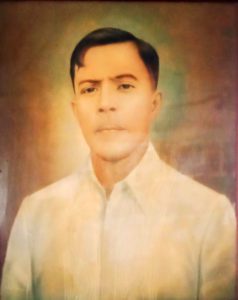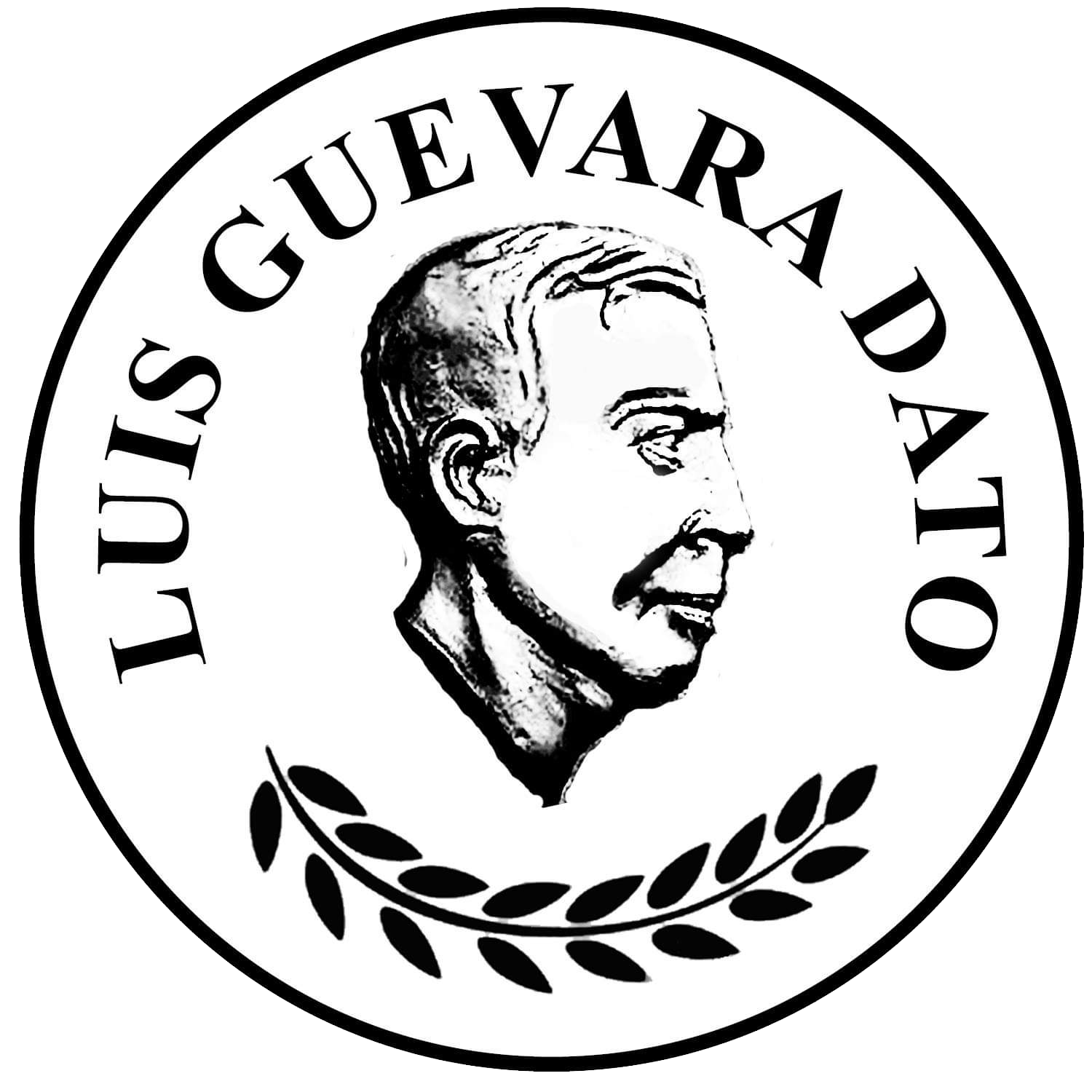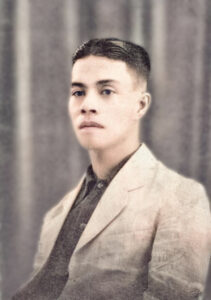This article, An Autobiographical Sketch is originally posted on https://lgdato.blogspot.com/ in 2006
LUIS G. DATO IN PROFILE
Date of Birth : July 4, 1906
Place of Birth : Baao, Camarines Sur
Parents : Eugenio Dato y Esplana/Barbara Guevara y Imperial
Paternal Grandparents : Damaso Dato/Nicolasa Esplana
Maternal Grandparents : Ludovico Guevara/Higina Imperial
Brothers and Sisters : Rodolfo Dato/Francisca D. Flores/Soledad D. Hidalgo/Pablo Dato (2nd Nuptials)
Wife: Cristeta Imperial y Banaga
Children: Vicente, Reynaldo, Myrna, Greta, Yolanda, Eugenio, Armi & Barbara
Schools Attended
- Naga Central School, (1914 – 1917)
- Tabuco Primary School, (1917 – 1918)
- Camarines Sur High School, (1920 – 1923)
- University of the Philippines
- High School, (1923 – 1924)
- University of the Philippines
- College of Liberal Arts (1924 – 1928)
- University of the Philippines
- College of Law (1928 – 1933)
- Southern Luzon College (1947 – 1949)
- University of Nueva Caceres (1949 – 1951)
- St. Anthony College (1971 – 1972)
Degrees
- Associate in Arts, U.P., 1926
- B.S.E., Southern Luzon College, 1949
- Bachelor of Laws, University of Nueva Caceres, 1951
- Master of Arts, (30 units) University of Nueva Caceres, St. Anthony College
Positions Held
- Classroom Teacher, Iriga Elementary School, 1926
- Baao Elementary School, 1937 – 1939
- Municipal Mayor, Baao, Camarines Sur, 1941 – 1947
- PRO, Provincial Governor’s Office, 1951 – 1959
- Faculty Member, Naga College, 1953 – 1954
- Member, University of Nueva Caceres, 1955 – 1967
- Faculty Member, St. Anthony College, 1947 – 1951; 1967 –
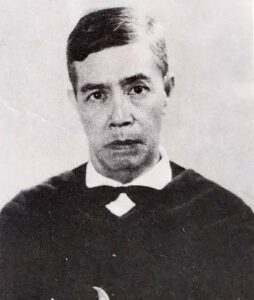
Club Memberships
- Sanghiran nin Bikol (1929 – 1931)
- Akademiang Bikol (1956)
- Knights of Rizal (1958 – )
- Naga City Press and Radio Club (1965 –
- Los Viejos Alegres (1967 – )
Journalism
- First Editor, Bicol Star (1933 – 1934)
- Editor, Tingog nin Banwaan, 1939 – 1940)
- Staff Member, Bicolandia, Juan dela Cruz, Bicol Examiner, Naga Times
- Member, Board of Editors, Bicol Mail
Awards
- First Prize, Bikol Meet Composition Contest (1922)
- First Prize, U.P. High Oratorical Contest (1924)
- First Prize, U.P. Liberal Arts Oratorical Contest (1926)
- First Prize, U.P. Literary Contest, (1926)
- Named “Outstanding Catholic Poet” by United Poets Laureate International (1965)
Books Published
- Manila, A Collection of Verse (1926)
- My Book of Verses (1936)
- The Instant Lyre (Manuscript)
- Vocabulario Bikol-Ingles-Kastila (1963)
- Kantahon na Bikol (1969)
- Morfologia kan Tataramon na Bikol (serialized in Naga Times)
- Patotodon sa Bikol (Bikol Mail)
- Sarabihon sa Bikol
Important Poems
- Life of Christ
- Handiong, Bicol Epic
- Sonnets to the Brown Goddess
- Translations of the major poems of Rizal
- Translations of other Filipino poets in Spanish
- Sonnets of the Liberation
- Coronation and Proclamation poems
- Love Lyrics
- Alma Mater poems
- Christmas poems
- Translations of Spanish, French, Mexican and Nicaraguan poet
- Other religious poems
Bikol Meet and Interscholastic poems
- Home poems
- Barrio poems
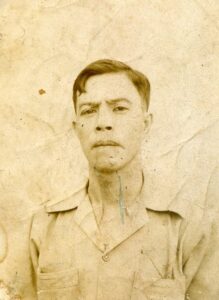
Evaluation of Dato’s Poetry
It is difficult for a poet to criticize and evaluate his own poetry. He is apt to be subjective and partial rather than objective and impartial. To any poet, his poems are masterpieces with not one word to be changed, not even one punctuation mark. However, I will try to be as objective and impartial as possible.
I am not a poet prodigy like Rizal, George Meredith, Thomas Hardy and others who began writing poetry as early as the age of three. I wrote my first poem in 1922 when I was 16. This is quite early, however, for a Filipino, considering that he is writing in English, a borrowed language. My first published poem appeared in the Naga Tribune in 1922, published in Naga, Camarines Sur (now Naga City). The editor was the late Juan Reyes, later to become Governor of Sorsogon, and older brother of Dr. Jose Reyes, former Dean of U.P. Cebu Junior College. My other early poems were published in Juan dela Cruz and Bicolandia, which newspapers stopped publication in 1930’s. Copies of these early published poems are now probably lost. But I remember through the mists of memory after a lapse of 50 years, one of these early published poems. It runs, as follows:
“Shades of night slowly falling,
All along my way,
I’m to life’s illusion calling,
Calling all the day.”
Lover’s voice I’m faintly hearing,
Not at last I hear,
And please God, I see her nearing,
She, my life, my dear!”
In 1929 at the age of 23, I wrote a complete Bikol version of the Bikol Pasion which I entitled “Life of Christ.” Book I was published in the Bicolandia during the Lent season of that year in weekly installments. The installments without duplicates were sent to the Bicolandia direct from our typewriter.
Book II could not be published after the end of the Lenten season and, therefore, remained among my papers and preserved for publication (in the Bicol Examiner in 1947 and the Bicol Star in 1952).
When World War II broke out, my file copies of the Bicolandia were lost, so also were the file copies of the newspapers in the possession of the Late Joaquin de San Agustin, Bicolandia editor who moved to manila where he became Secretary of the Senate. Other file copies of the Bicolandia owned by typesetters of the newspaper were also lost because according to one of them, Mr. Panoy, he used as cigarette wrapper during the Japanese occupation.
About 20 others of my poems have been lost in the course of the long passage of time, especially during the evacuations of the Japanese occupation and the melees of the liberation. Some 40 sonnets in “The Brown Goddess” were lost in typhoon Sening.
What are the characteristics of my poetry?
- Most of them are written in traditional or conventional poetry, that is, with meter or rhyme or both. I have written some free verse, being one of the first Filipino poets to write in this medium.
- I have written what perhaps is the longest poem in English written by a Filipino, “The Life of Christ.
- I have written what is probably the longest sonnet sequence in the Philippines numbering nearly 200 sonnets. The longest sonnet sequence in English literature is of Shakespeare’s which is composed on 134 sonnets
- I was the first Filipino to translate Rizal’s “Mi Ultimo Adios.“
- I believe that I have written more poems than any Filipino, dead or living, written in English, Spanish or the native languages. I have written no less than 500 poems
- I believe I hold the speed record for poetry writing in the Philippines, hence proposed to call, “The Instant Lyre.” It is not unusual for me to write a short poem in 15 minutes. On a midnight in 1964, I was able to write the rough draft of half a dozen sonnets within half an hour.
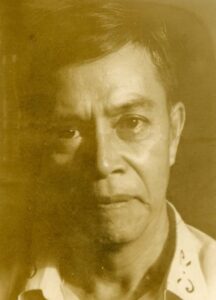
How I Learned to Write Poetry
I never took course in poetry writing, other than the prescribed courses in American and English Literature in high school and college. But I had written my early poems years before I took my college courses. By reading poems by Filipinos and by English, American and European poets, I learned to get the feel of poetry. I read poetry because I like it and also because in 1924 when brother, Rodolfo, was working on his “Filipino Poetry,” an anthology of Filipino poetry in English from 1911 to 1924, he had no time to over hundreds of poems in the file of the Old Filipiniana Division of the National Library in Intramuros, Manila. As younger brother, I could not disobey his assignment to go over all these poems, giving me discretion to select those to be considered for his anthology. By the time I had finished my stint, I had written one poem, “Among the Hills,” which my brother thought good enough to be included in his anthology.
Also, fall in love. Look around at our girls who, I think, are among the loveliest in the world. Break your heart with the pain, the anguish of unrequited love. Indulge in self-pity, if it cannot helped. But sublimate your frustrations. You are then in condition to write poetry, poetry from the depths of the soul.
Another reason why I learned to write poetry is inspirational. I fell in love more than half a dozen of times between 1920 and 1924, and more than a dozen times between 1924 and 1974. My loves gave me inspiration to compose – Rosario, my first love; Purita, my tragic Inday love, for whom I had a breakdown, who died of anemia pernicosa (leukemia I think medical science calls it today); Juliana, a rural maid; Felicidad, another unhappy love; Andrea, also a muse of Camarines Sur high school days; Virginia, a Manileña; Vicenta, my Spanish mestiza flame; Rosa, still another tragic love; Mely, my most recent and probably the last of my muses; not to mention more than a dozen puppy loves and minor liaisons, excluding others for whom I lusted with more than a momentary, dance-partner fascination, in an age when mini skirts and see-throughs were not needed for the pull of infatuation; and still others, married, unmarried or estranged from their husbands, about each of whom I could well write a full-length novel in reminiscence, had I have the time, the will, the creativity and the documentation.
And lastly, singled out of all, down the cavalcade of the years, and my climacteric in the 1930’s, Pacita, my national beauty, of remote Chinese descent I lost because I did not play my cards well, like the dolt that I was in my green, obsessive years, who caused me to defer my law course almost 20 years, my glory and despair of a lifetime.
In brief, to those who want to write poetry, who ask me how and why I wrote poetry as well as the question, “Is poet born or made?” my answer is:
Read poetry, the best in world literature, especially English, European, South American and Asian poetry. Imitate the way they think, the way they write.
Also, fall in love. Look around at our girls who, I think, are among the loveliest in the world. Break your heart with the pain, the anguish of unrequited love. Indulge in self-pity, if it cannot helped. But sublimate your frustrations. You are then in condition to write poetry, poetry from the depths of the soul.
